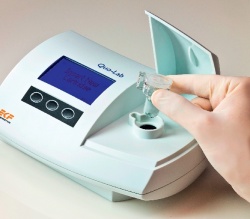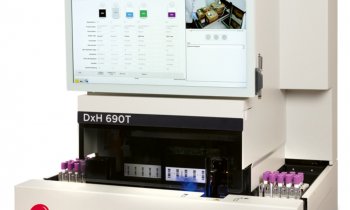POCT testing technology
Julian Baines, Group CEO of EKF Diagnostics Holdings plc, considers the present role of point of-care tests and their potential value to health services


By its very nature, Point of Care Testing (POCT) technology does not strictly sit within the hospital sector. Rather, the rationale behind POCT is to keep the patient out of the hospital system and within the primary care setting. This is because lying at the heart of the concept of POCT is the principle that medical tests are convenient and immediate to the patient. Consequently, in countries that have fully embraced POCT, patients can visit a general practitioner (GP) or a nurse to provide a tiny blood sample and undertake a test for haemoglobin levels, lipids, glycated haemoglobin (HbA1c), CRP, to name but a few, and receive a lab-accurate result before leaving the surgery.
By putting resources into POCT, governments can free up funds and resources that can then be invested in other critical hospital services. Therefore, rather than resist the inevitable drift towards POCT, hospitals should embrace technology that is focused on providing a better patient experience and reduces the total cost of basic patient care by enabling clinical decisions to be made at the earliest opportunity. Currently, the barriers to the wider use of POCT are not so much technological, providing products are designed and manufactured with quality and ease of use at the forefront to rapidly deliver accurate results, but those of politics and acceptance.
Using the United Kingdom as an example, the National Health Service (NHS) is a political hot potato and any change is deemed to be negative or, in the case of the current government, an attempt to privatise. This is an extreme point of view because POCT has the potential to save the NHS vast sums of money through earlier diagnosis and treatment, or even the reduction of unnecessary treatment. However, when the former Minister of Health, Andrew lansley, tried to tweak the system to allow more POCT he was criticised. The UK has a highly structured and complex central laboratory system and making changes will not be easy due to the highly politicised nature of the NHS. It is a similar story in France, although there is a move there to radically reduce the number of central laboratories that might, in turn, make the French health authorities more open to the POCT concept.
Not surprisingly, there are varying degrees of POCT acceptance between countries and continents. In countries such as the USA and Germany, where health insurance pays for treatment, POCT is embraced because of the cost efficiencies it offers. In emerging markets the opportunity is even greater, as they do not have a preestablished dependence on central laboratory testing and therefore are often early adopters of diagnostic innovation that improves patient care. Without doubt, emerging markets are catching up with the western world regarding patient care, and the effective use of POCT is a key contributor to this.
Another key driver stimulating the growth in POCT uptake in emerging markets, such as Asia, is an increasing per capita GDP with subsequent escalation in incidence of western diseases, for instance diabetes. This has been evidenced by growing demand in these regions for our Quo-Test and Quo-lab analysers for easy and reliable measurement of glycated haemoglobin (HbA1c), which is used to detect and manage diabetes.
The on-going world economic downturn should further influence the greater adoption of POCT within countries not currently widely using such technology. This is because POCT offers excellent patient care and monitoring at a significantly lower cost to traditional laboratory and hospital based care. In times of austerity POCT offers an avenue for reducing the financial burden on health services.
That said, POCT is not without limitations. No GP would use POCT exclusively where a second opinion from hospital consultants and experienced biomedical scientists are critical, for example in oncology or HIV. However, POCT can play a key role in identifying early onset of conditions, such as diabetes and anaemia, which can then be investigated by further testing at a central laboratory.
PROFILE
Julian Baines has extensive experience and understanding of the global diagnostics and POCT market stems from his decade as Group CEO of British Biocell International (BBI), where he was responsible for selling the business to Alere Inc in 2008. He is still a BBI Board Member, as a non-executive director. In December 2009 he was appointed CEO of EKF Diagnostics Holdings plc and completed the acquisitions of Quotient Diagnostics, Argutus Medical and Stanbio Laboratory. EKF Diagnostics, he points out, is now one of the world’s fastest growing diagnostic businesses.
04.03.2013











